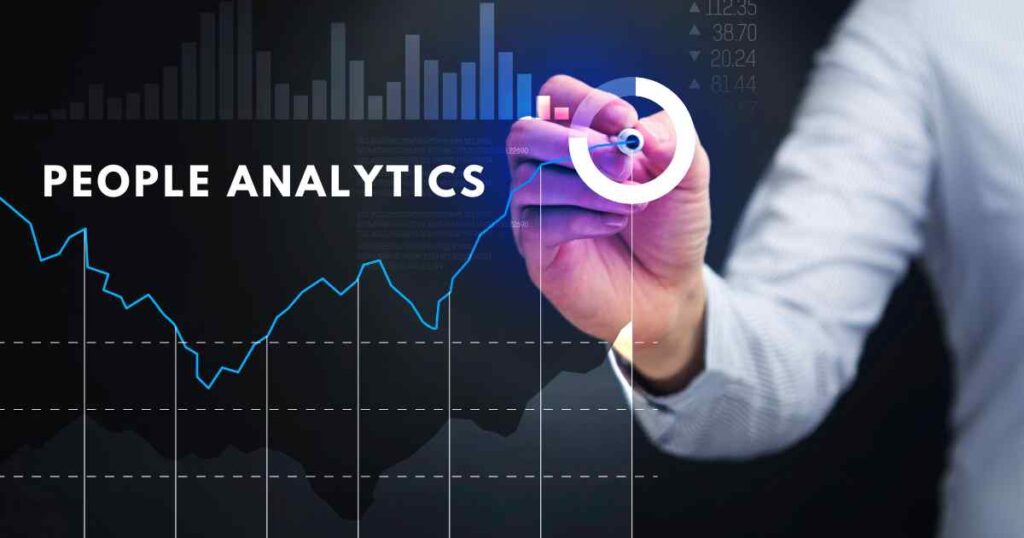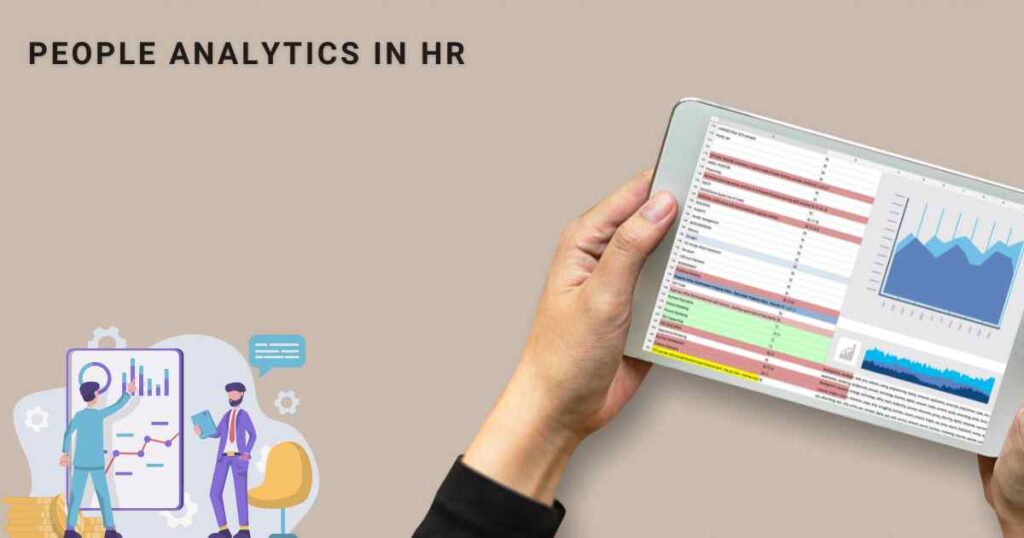People analytics, also known as HR analytics or human resource analytics, is the use of data and statistical methods to measure and improve the performance and well-being of employees and organizations. People analytics can help HR professionals make better decisions based on evidence, rather than intuition or gut feeling.
People analytics can answer questions such as:
- How can we attract and retain the best talent?
- How can we increase employee engagement and satisfaction?
- How can we reduce turnover and absenteeism?
- How can we develop and train our workforce?
- How can we optimize our compensation and benefits strategy?
- How can we foster a diverse and inclusive culture?
- How can we align our human capital with our business goals and strategy?
In this blog post, we will explore how people analytics can help HR professionals improve their decision-making process and boost business performance. We will also look at some examples of how leading companies like Google are using people analytics to reinvent HR.
What is People Analytics?

People analytics is the application of data science to human resources. It involves collecting, analyzing, and interpreting data about employees and their interactions with the organization. People analytics can use various sources of data, such as:
- HR systems (e.g., payroll, performance management, learning management, etc.)
- Employee surveys and feedback
- Social media and online platforms
- Wearables and sensors
- External benchmarks and industry data
People analytics can use various methods of analysis, such as:
- Descriptive analytics: summarizing what has happened in the past (e.g., turnover rate, employee satisfaction score, etc.)
- Diagnostic analytics: explaining why something has happened in the past (e.g., root cause analysis, correlation analysis, etc.)
- Predictive analytics: forecasting what will happen in the future (e.g., attrition risk, hiring demand, etc.)
- Prescriptive analytics: recommending what actions to take in the future (e.g., optimal hiring strategy, best training program, etc.)
People analytics can provide valuable insights for HR professionals to make informed and data-driven decisions. However, people analytics is not just about data and numbers. It also requires a human touch and a strategic mindset. People analytics should be aligned with the organization’s vision, mission, values, and goals. People analytics should also respect the privacy and ethics of employees and stakeholders.
How does people analytics affect HR?

People analytics can have a significant impact on HR functions and processes. Here are some examples of how people analytics can affect HR:
- Recruitment: People analytics can help HR professionals identify the best sources of talent, design effective job descriptions and assessments, predict candidate fit and performance, and optimize hiring decisions.
- Retention: People analytics can help HR professionals understand the drivers of employee turnover, identify employees at risk of leaving, and design interventions to retain them.
- Engagement: People analytics can help HR professionals measure and improve employee engagement and satisfaction levels, identify key drivers of engagement, and design initiatives to enhance employee experience.
- Performance: People analytics can help HR professionals measure and improve employee performance levels, identify high-potential employees, and design feedback and recognition systems.
- Development: People analytics can help HR professionals assess the skills and competencies of employees, identify skill gaps and learning needs, and design personalized learning paths and career plans.
- Compensation: People analytics can help HR professionals benchmark and optimize compensation and benefits packages, align pay with performance and market rates, and design incentive schemes.
- Diversity: People analytics can help HR professionals measure and improve diversity and inclusion levels, identify biases and barriers to diversity, and design initiatives to foster a diverse and inclusive culture.
With the use of people analytics, HR professionals can greatly improve their strategic role by enhancing various HR functions and processes. This will not only positively impact the business outcome but also prove the value of human capital to senior leaders and stakeholders. Additionally, this analytical tool allows for experimentation and innovation, providing endless possibilities for growth and improvement.
How To Use People Analytics to boost Business Performance

People analytics is not an end in itself. It is a means to an end. The ultimate goal of people analytics is to boost business performance by improving human capital. Here are some steps that HR professionals can follow to use people analytics to boost business performance:
- Define the business problem or opportunity: The first step is to identify the specific business problem or opportunity that needs to be addressed by people analytics. For example, how to increase sales revenue, how to reduce customer churn rate, how to improve product quality, etc.
- Identify the relevant metrics: The next step is to identify the relevant metrics that measure the business problem or opportunity. For example, sales revenue, customer churn rate, product quality score, etc.
- Collect and analyze the data: The next step is to collect and analyze the data that relates to the metrics and the business problem or opportunity. This may involve using various sources and methods of data collection and analysis, as mentioned earlier.
- Generate and test hypotheses: The next step is to generate and test hypotheses that explain the relationship between the data and the metrics. For example, what factors influence sales revenue, customer churn rate, product quality score, etc. This may involve using various methods of data analysis, such as correlation analysis, regression analysis, cluster analysis, etc.
- Recommend and implement solutions: The final step is to recommend and implement solutions that address the business problem or opportunity based on the data and hypotheses. For example, how to improve sales revenue by increasing employee motivation, how to reduce customer churn rate by enhancing customer service, how to improve product quality by providing feedback and training, etc. This may involve designing and executing various interventions and initiatives, such as incentive schemes, training programs, feedback systems, etc.
By following these steps, HR professionals can use people analytics to boost business performance by improving human capital. However, it is important to note that people analytics is not a one-time project. It is an ongoing process that requires continuous monitoring and evaluation. HR professionals should track the results and outcomes of their people analytics solutions and adjust them as needed. HR professionals should also seek feedback and input from employees and stakeholders throughout the process.
How Google is using People Analytics to reinvent HR
By leveraging people analytics, Google has become one of the top companies transforming the HR landscape. The search engine giant boasts a dedicated team of analysts who collaborate closely with HR professionals and business leaders to offer data-driven strategies and solutions for tackling diverse human resource challenges.
Some examples of how Google is using people analytics to reinvent HR are:
-
- Project Oxygen: Google used people analytics to identify the key behaviors and attributes of effective managers. Google then used this information to design a feedback system and a training program for managers. Google found that this improved manager quality, employee satisfaction, retention, and performance.
- Project Aristotle: Google used people analytics to identify the key factors that make a team effective. Google then used this information to design a team effectiveness survey and a team coaching program. Google found that this improved team collaboration, innovation, and productivity.
- PiLab: Google used people analytics to experiment with various HR policies and practices. For example, Google tested the impact of different types of nudges on employee behavior, such as increasing 401(k) contributions, reducing food waste, or improving well-being. Google then used this information to implement the most effective nudges across the organization.

